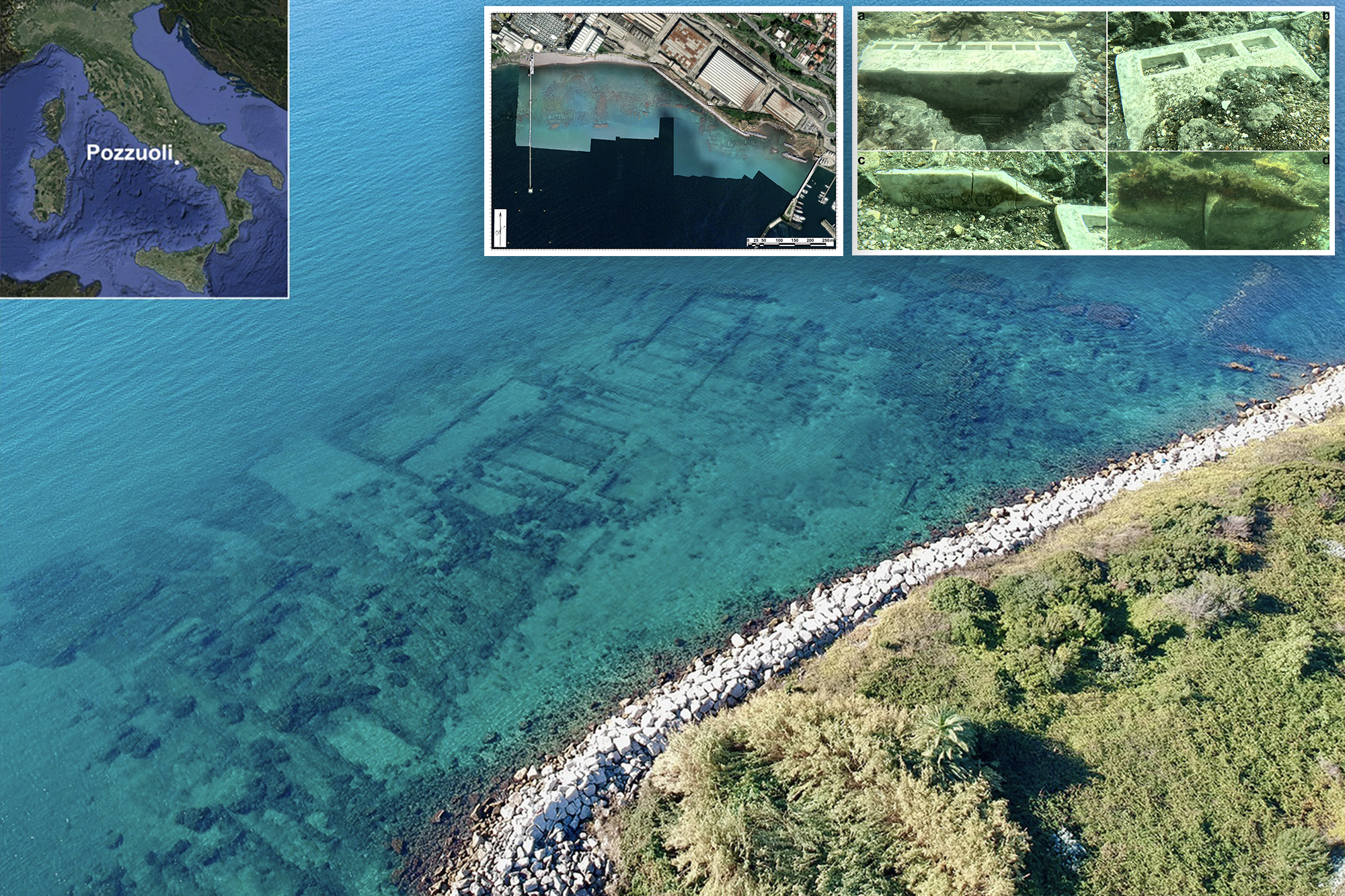
Archaeologists have discovered the remains of a 2,000-year-old sunken temple off the Italian coast near Naples, likely built by immigrants from Nabataea, an ancient Arab kingdom.
Nabataea is known for Petra’s iconic rock-cut structures, including the Treasury, famously featured in Indiana Jones and the Last Crusade.
The Nabataean kingdom once controlled a trade network that stretched from northern Arabia to the Mediterranean, dealing in incense, gold, ivory, and perfumes.
Their wealth peaked in the first century AD, exemplified by the Treasury of Petra.
The temple, thought to have been used by Nabataean traders, was later buried under concrete and pottery, possibly because traders left the area, according to a study published in Antiquity on September 12.
Student Michele Stefanile with the Scuola Superiore Meridionale in Italy first began the underwater study in 2021 to search the area.
“When I was a student, I was impressed by the presence of some Nabatean materials found somewhere in the sea at Puteoli since the 18th century, and I was also surprised that no one really organized a hunt for this impressive historical evidence,” said Michele Stefanile. , a marine archaeologist at the Southern Graduate School in Naples for Fox News Digital.
The temple lies near Pozzuoli, about 10 miles east of Naples.
During Roman times, Pozzuoli was known as Puteoli and served as a commercial port.
In 2023, researchers mapping the sea floor discovered two submerged chambers with Roman-style walls. The chambers, about 32 by 16 feet, contained two white marble altars, each with rectangular niches that likely held sacred stones.
“It seems that we have a building dedicated to the Nabataean gods, but with Roman architecture and a Latin inscription,” Stefanile told Live Science.
The marble slabs in the rooms were inscribed in Latin with the phrase “Dusari sacrum,” meaning “consecrated to Dushara,” the deity of the Nabataean people.
Volcanic activity over the centuries has submerged about 1.2 miles of Roman-era buildings near Pozzuoli, including warehouses and other structures from the ancient port.
Artifacts found since the 18th century suggested that a temple may have been buried there, but its exact location was not known until now.
“Perhaps after Trajan’s conquest of Arabia in AD 106, the Nabataeans no longer had opportunities for free trade in Puteoli, and they probably abandoned the port,” Stefanile told Live Science.
After Nabataea was annexed to the Roman Empire in 106 AD, the internal trade routes controlled by the Nabataeans collapsed.
The temple at Puteoli may have been buried in response to these changes.
“The entire region is characterized by intense volcanic activity, which caused the submergence of the entire ancient coastal belt to a depth of 0-6 meters,” according to the Scuola Superirore Meridionale.
#2000yearold #temple #Indiana #Jones #civilization #lies #submerged #Italian #coast
Image Source : nypost.com